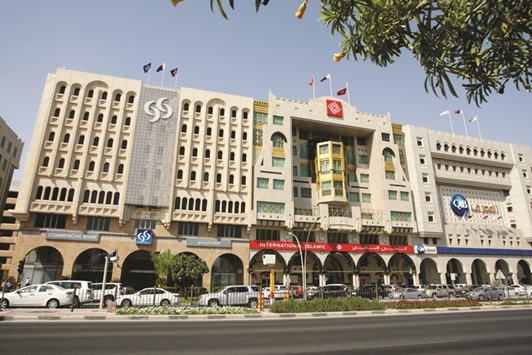Qatar’s banking industry, whose profitability rose 1.7% year-on-year (y-o-y) in the first quarter (Q1) of this year against a 0.7% fall in the Gulf Cooperation Council (GCC) average despite higher provisions, maintained the highest lending growth within the regional lenders, according to a study.
Kuwait and the UAE banks witnessed their profits decline 10.1% and 7.7% respectively; while those in Saudi Arabia rose 6.6% during the review period, said the study by Global Investment House.
A quarter-on-quarter basis analysis showed that net profit of the GCC aggregate expanded 6% with Saudi Arabia leading the gain (13.9%), followed by Qatar (13.3%) and Kuwait (1.6%); even as the UAE witnessed a sequential profit fall of 6.3%, largely on decline in operating income.
Among Qatari lenders, Qatar Islamic Bank reported a robust 23% y-o-y bottom-line growth in Q1 2016 mainly due to improvement in net and non-financing income; followed by QNB and Masraf Al Rayan which registered 7.1% and 5.1% respectively.
Qatar-based banks managed to maintain highest lending growth of 16% y-o-y against the GCC average of 8.7% owing to an increase in public sector spending backed by several developmental initiatives taken by the government prior to FIFA World Cup 2022. Among them, Qatar Islamic Bank, QNB and Doha Bank registered higher lending growth of 41.2%, 16.4% and 11.8% respectively.
Among the GCC banks under its coverage, Saudi Arabian lenders witnessed loan growth of 7.4%, followed by the UAE 7% and Kuwait 3.9%, it said.
Total assets of the GCC banks expanded 5.6% y-o-y in Q1 2016 with those based in Qatar witnessing the strongest growth of 11.8%, followed by those in the UAE (6.8%) and Saudi Arabia (2.2%); while Kuwait witnessed almost a flat trajectory of 0.7%.
Among the Qatar banks, assets of Qatar Islamic Bank grew 33.1% and Doha Bank 14.2%.
The net interest income of GCC banks increased 2.6% y-o-y in Q1 2016 with those of Saudi Arabia growing the most at 5.1%, followed by Qatar (2.9%) and Kuwait (2.1%); whereas lenders in the UAE witnessed a decline of 0.5%.
In Doha, Qatar Islamic Bank reported 14.3% growth y-o-y in its net financing income, followed by QNB (4.3%).
In the case of non-interest income, while the GCC banks witnessed 6.1% decline y-o-y in Q1 2016, those in Qatar braved the odd as their non-interest earnings expanded 13.7%, whereas those in Kuwait witnessed 26.1% plunge, Saudi Arabia (5.9%) and the UAE (4%).
During the review period, the overall operating expenses of the GCC banks tapered off 1.7% y-o-y with Saudi Arabian and Kuwait banks’ such costs dropping 7% and 5.4%; even as those of Qatar and the UAE grew 5.1% and 3.5% respectively.
Within the Qatari lenders, the operating costs of Qatar Islamic Bank increased 11.9% y-o-y, QNB (6.2%) and Commercial Bank (5.1%).
Provision expenses of Qatari banks surged 28.9% y-o-y in Q1 2016 against a fall of 1% in the GCC, it said, adding Kuwait lenders’ provision expenses rose 7.4%, Saudi Arabia 2.5% and the UAE 0.6%.
Among Qatar banks, there was “significant divergence” in the direction of increase in provision expenses on y-o-y basis with Doha Bank reporting 199.4% increase, Commercial Bank (128.7%) and Qatar Islamic Bank (49%); while those of QNB and Masraf Al Rayan fell 75.8% and 78.4% respectively.

Qatar-based banks managed to maintain highest lending growth of 16% y-o-y against the GCC average of 8.7% owing to an increase in public sector spending.


